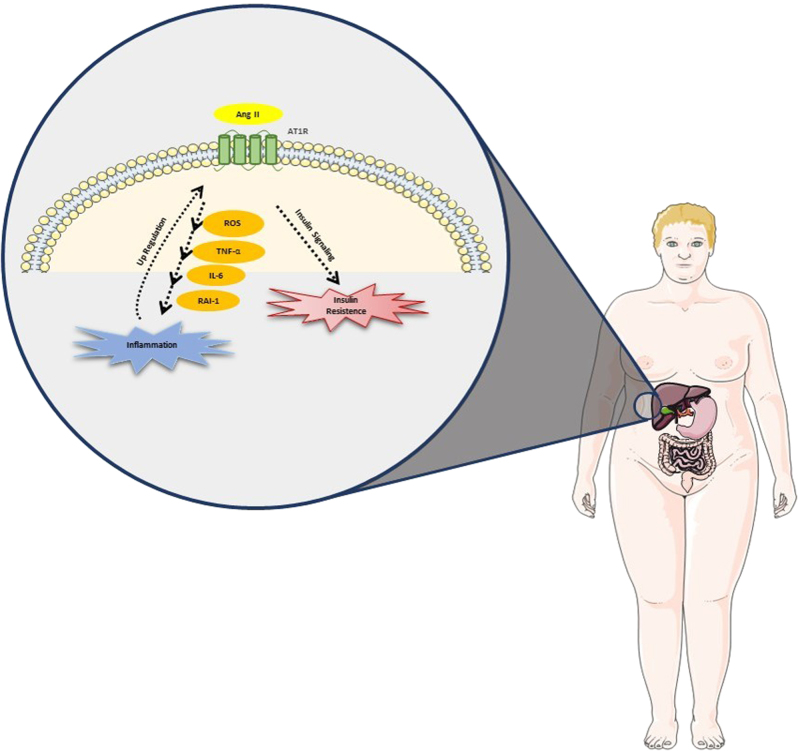Fig. 1.
Ang II is a major player in NAFLD. Ang II impairs intracellular insulin signaling resulting in worsening of insulin resistance, the main pathophysiological element of NAFLD. Ang II also induces generation of reactive oxygen species (ROS), initiating and propagating the production of pro-inflammatory mediators, including tumor necrosis factor-α (TNF-α), interleukin-6 (IL-6), and plasminogen activator inhibitor-1 (PAI-1). These results in inflammation, additional impairment of insulin signaling, and upregulation of the AT1R genes, contributing to the vicious cycle of steatosis–necroinflammation–fibrosis

